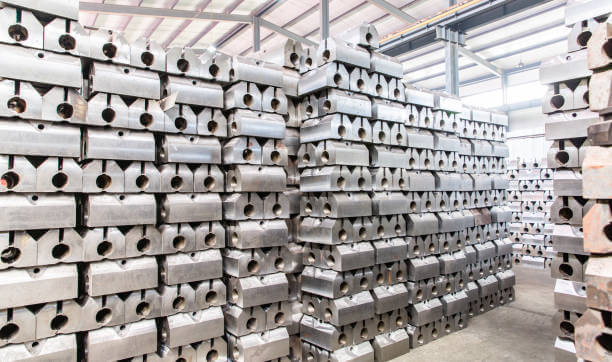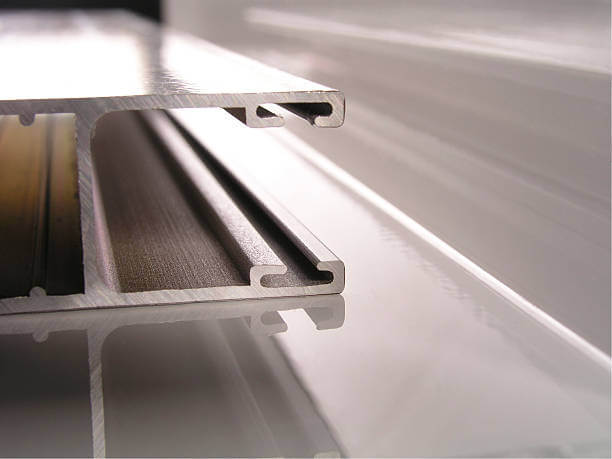When we think about everyday materials, aluminum often comes to mind due to its widespread use in products ranging from soda cans to airplanes. But this raises a fundamental question: Is aluminum a metal? The answer is a resounding yes—aluminum is indeed a metal. However, the reasons behind this classification, the unique properties of aluminum, and its various applications in different industries warrant a deeper examination.

| Fact | Description |
|---|---|
| Mirrors | A thin layer of aluminum is used in making mirrors |
| Synthetic Gemstones | Used to make synthetic rubies and sapphires |
| Annual Melting | About 41 million tons of aluminum are melted each year |
| Energy Reduction in Production | Energy needed to produce aluminum has decreased by 70% in the last 100 years |
| Washington Monument | The top is capped with an aluminum pyramid |
Before diving into aluminum’s characteristics, let’s first understand what qualifies a substance as a metal. Metals are typically defined by a set of physical and chemical properties. Below is a table summarizing the key properties of metals:
| Property | Description |
| Conductivity | Metals are excellent conductors of electricity and heat due to the free movement of electrons within their atomic structure. |
| Malleability | Metals can be hammered or rolled into thin sheets without breaking, making them ideal for various industrial applications. |
| Ductility | Metals can be stretched into wires without snapping, another attribute that adds to their versatility. |
| Luster | Metals have a shiny appearance, which is due to their ability to reflect light. |
| Density | Metals generally have a high density, meaning they are typically heavy for their size. |
| Strength | Metals are strong and resistant to external forces, making them suitable for structural and construction purposes. |
| Corrosion Resistance | While some metals can corrode, many have high resistance to corrosion or can be treated to enhance their resistance. |
| Magnetism | Some metals, particularly iron, are magnetic, although not all metals exhibit magnetic properties. |
Aluminum fits into the category of metals because it exhibits all the primary characteristics of metals, though with some unique variations that make it particularly valuable. Here’s a closer look at how aluminum aligns with the general properties of metals:
| Property | Aluminum’s Characteristics |
| Conductivity | Aluminum is a good conductor of electricity and is often used in electrical transmission lines, second only to copper in terms of electrical conductivity among metals. |
| Malleability | Aluminum is highly malleable, allowing it to be easily rolled into thin sheets or foils. |
| Ductility | Aluminum can be drawn into wires, which is why it is frequently used in electrical wiring and in the production of fine wire products. |
| Luster | Freshly cut aluminum has a bright, silvery-white luster, although it can oxidize and develop a duller appearance if not treated or coated. |
| Density | Aluminum is lightweight compared to other metals, which makes it extremely valuable in industries where weight is a critical factor, such as in aerospace engineering. |
| Strength | While pure aluminum is not as strong as some other metals, its strength can be significantly enhanced through alloying with other elements like magnesium, copper, or zinc. |
| Corrosion Resistance | Aluminum naturally forms a thin oxide layer when exposed to air, which protects it from further corrosion, making it ideal for outdoor and marine applications. |
| Magnetism | Aluminum is non-magnetic, which makes it useful in applications where magnetic interference must be avoided, such as in electronic devices. |

Aluminum is positioned in group 13 of the periodic table, where it is classified as a post-transition metal. It has the atomic number 13 and the symbol Al. The electron configuration of aluminum is [Ne] 3s²3p¹, which means it has three valence electrons that can be easily lost to form positive ions (Al³⁺), a characteristic behavior of metals.
Below is a table highlighting aluminum’s basic atomic properties:
| Property | Value |
| Atomic Number | 13 |
| Atomic Mass | 26.98 u |
| Electron Configuration | [Ne] 3s²3p¹ |
| Group in Periodic Table | Group 13 |
| Density | 2.70 g/cm³ |
| Melting Point | 660.3°C |
| Boiling Point | 2519°C |
Aluminum wasn’t always the ubiquitous material it is today. In fact, it was once considered more precious than gold. In the 19th century, the process of extracting aluminum from its ore, bauxite, was costly and labor-intensive, making the metal extremely rare and valuable. However, with the development of the Hall-Héroult process in 1886, which made aluminum extraction more efficient, the metal became much more accessible.

Aluminum’s properties make it an ideal material for a wide range of applications. Below is a table that outlines some of the key industries where aluminum is indispensable:
| Industry | Application |
| Aerospace | Aluminum is used extensively in the construction of aircraft due to its lightweight and strong properties, which contribute to fuel efficiency and overall performance. |
| Automotive | Aluminum is used in vehicle frames, engine components, and wheels, helping to reduce the weight of vehicles, which improves fuel efficiency and reduces emissions. |
| Construction | Aluminum is used in window frames, roofing, and siding due to its durability, corrosion resistance, and aesthetic appeal. |
| Packaging | Aluminum is commonly used in beverage cans, foil wraps, and food containers due to its non-toxic nature and excellent barrier properties against light, oxygen, and moisture. |
| Electrical | Aluminum is used in power lines, cables, and electronic components because of its good conductivity and lightweight nature. |
| Marine | Aluminum is used in the construction of ships and boats because of its corrosion resistance, especially in saltwater environments. |
| Consumer Goods | Aluminum is used in a variety of household items, including kitchen utensils, appliances, and electronic gadgets, thanks to its durability and aesthetic qualities. |

While pure aluminum is used in many applications, it is often alloyed with other metals to enhance its properties. Common alloying elements include magnesium, copper, manganese, silicon, and zinc. These aluminum alloys are categorized into different series, each with specific characteristics suitable for various applications.
| Alloy Series | Primary Alloying Element(s) | Key Characteristics | Common Applications |
| 1000 Series | Pure aluminum (99% or more) | Excellent corrosion resistance, high thermal and electrical conductivity | Electrical conductors, heat exchangers, chemical equipment |
| 2000 Series | Copper | High strength, good machinability, less corrosion resistant | Aircraft structures, truck frames |
| 3000 Series | Manganese | Good corrosion resistance, moderate strength, good workability | Cooking utensils, pressure vessels, chemical storage |
| 5000 Series | Magnesium | High strength, good corrosion resistance, weldable | Marine applications, automotive panels, pressure vessels |
| 6000 Series | Magnesium and silicon | Balanced strength and corrosion resistance, excellent machinability and weldability | Structural components, architectural applications |
| 7000 Series | Zinc | Very high strength, less corrosion resistant, often used in aircraft | Aerospace applications, sporting equipment |
One of the most remarkable aspects of aluminum is its recyclability. Aluminum can be recycled indefinitely without losing its properties, making it one of the most sustainable materials available. Recycling aluminum requires only about 5% of the energy used to produce primary aluminum from bauxite, which significantly reduces the environmental footprint.
Here’s a comparison of energy requirements between primary aluminum production and recycling:
| Process | Energy Consumption (MJ/kg) | CO₂ Emissions (kg CO₂/kg) | Recycling Rate |
| Primary Production | 190-220 | 11-13 | ~30-35% |
| Recycling | 10-15 | 0.6-0.8 | ~90-95% |
Copyright © Huasheng Aluminum 2023. All rights reserved.